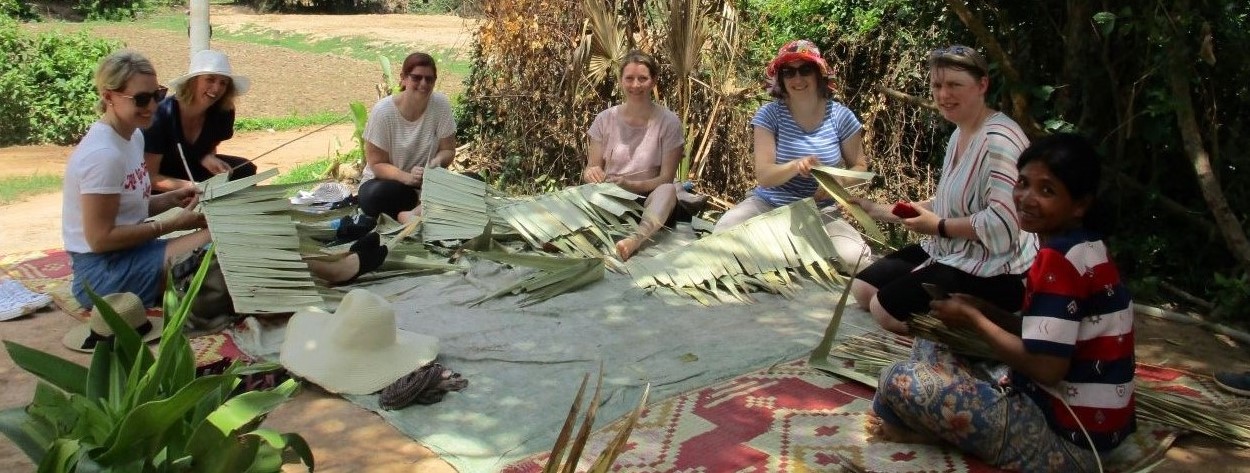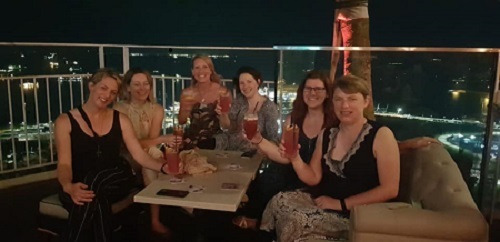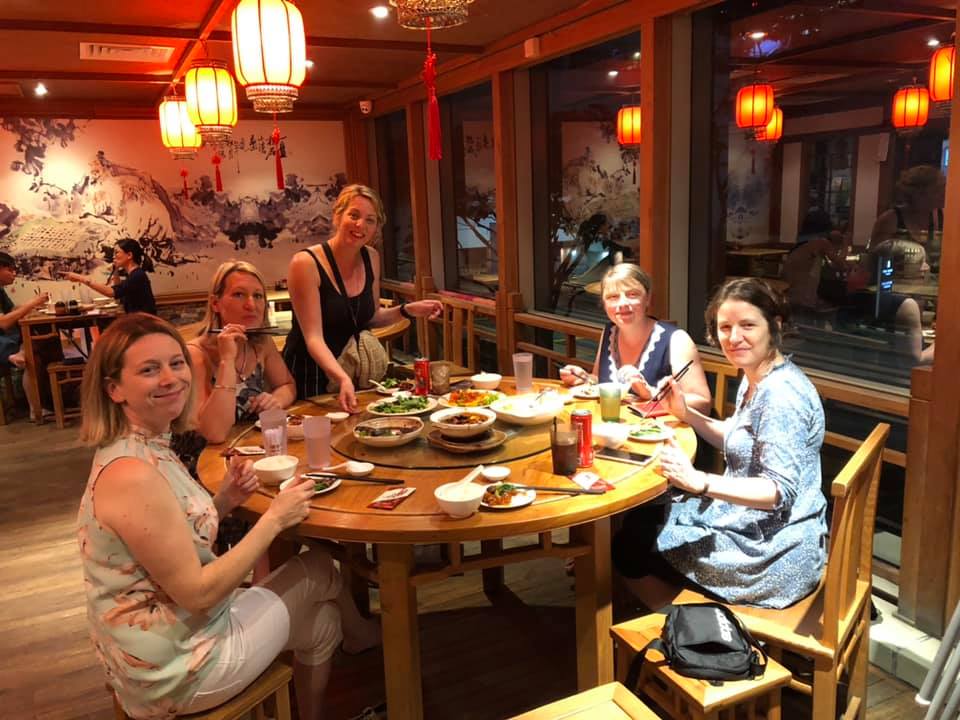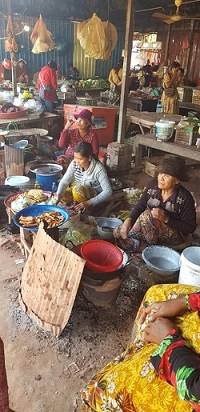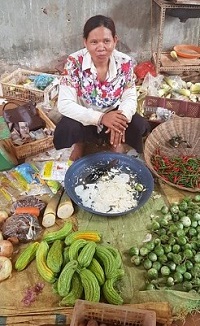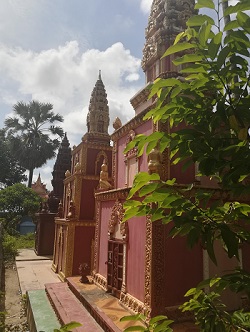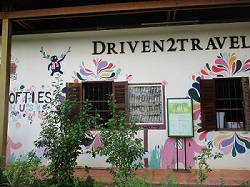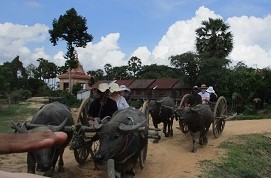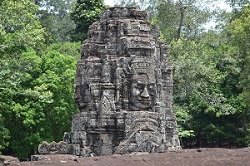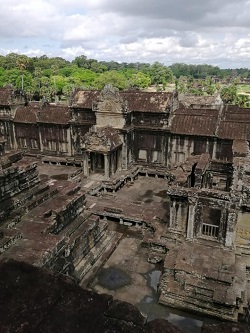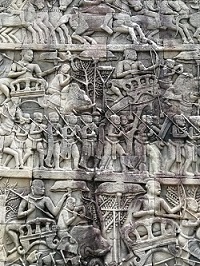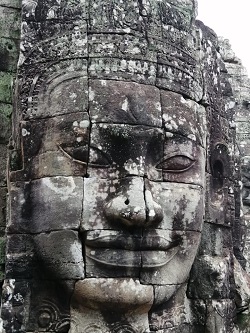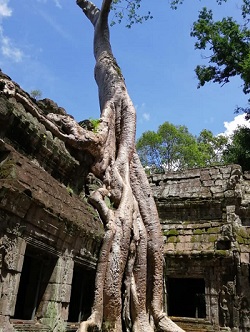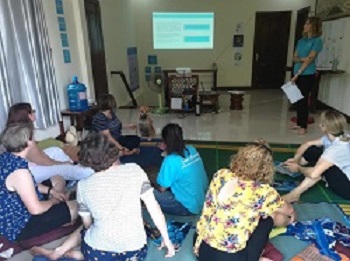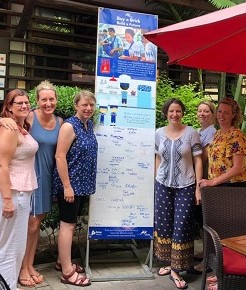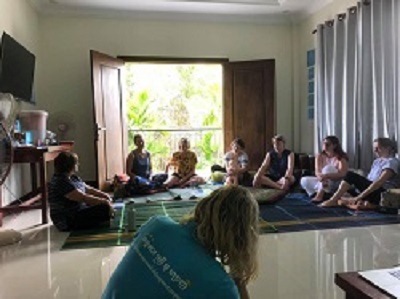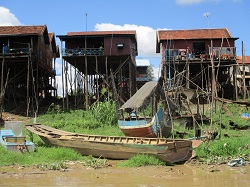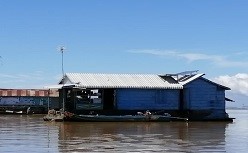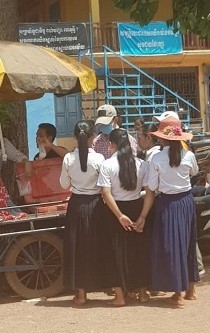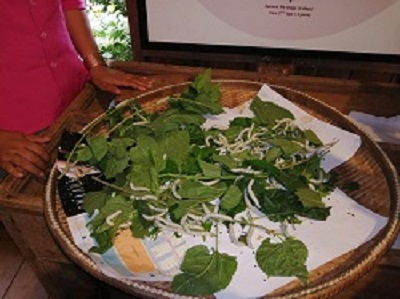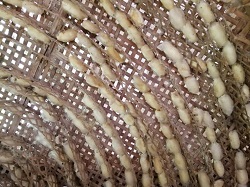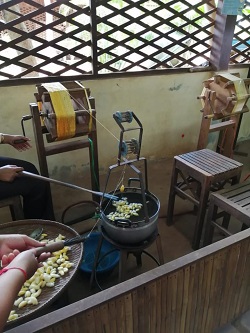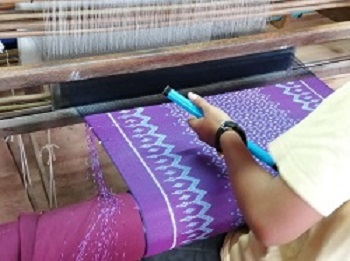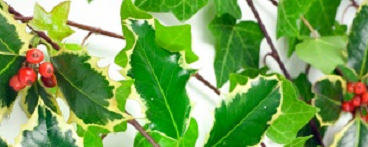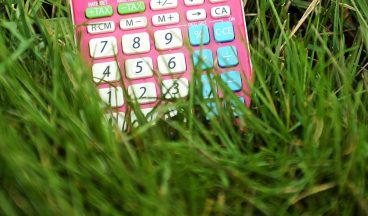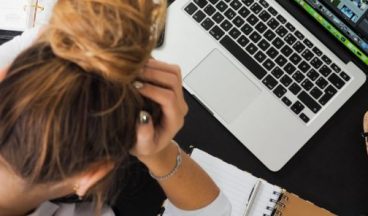The Pillow May team visited Cambodia for a team development trip and to visit Free to Shine, the charity that we had supported for our 10th birthday year. Our superb trip was organized by the wonderful team at See Asia Differently , the whole trip was effortless thanks to all the efforts of Peter and his team with some of his staff going above and beyond to ensure we enjoyed every moment.
Each team member wrote one day’s blog about our trip to give some variety & different viewpoints. See if you can guess who wrote which one!
Day 1/2 – The Journey there via Singapore
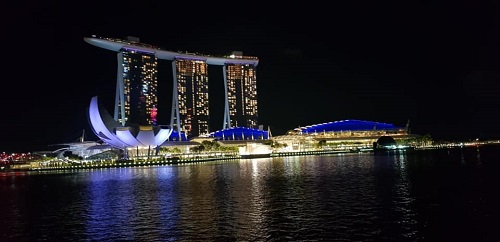
The team trip to Cambodia was a great opportunity for me to spend some time with my colleagues, whilst visiting the incredible cause that is Free to Shine. Working remotely for Jessica and the team is amazing and shows how easily it can be done from the other side of the world, however the lack of face to face time and “office banter” is definitely missed. So, I was super excited to be included on the trip, albeit the thought of travelling alone on the 8,000-mile journey just to meet up with the others was daunting! After the initial scarily small prop plane to Christchurch, the flight to Singapore was comfortable. I was excited to see the team, some of whom I had never met in person.
Once we had all met at Changi Airport, we were taken to the Pan Pacific Hotel to relax and unwind. We only had one evening to spend in Singapore so we decided to go straight out and see what the city had to offer. First stop was dinner, typical malaysian food in a local restaurant which was superb. I was surprised to encounter quite a language barrier ordering our food, in such a glitzy multinational city. As we were only staying for one night, none of us had brushed up on our Malay or Mandarin!
We then ventured on into the city for an explore. Of course, no trip to Singapore is complete without a peek at the Raffles Hotel, and the Marina Bay Sands Hotel and Skypark. As it turned out, crossing the road in Singapore is not the done thing, and getting anywhere relied on a series of underground routes, and some knowledge of where you were going. Fortunately, Jessica found the map on her phone, and after taking the scenic route, we arrived at Marina Bay.
The LAVO restaurant is situated on the rooftop of MArina Bay Sands Hotel, a staggering 57 floors up. The view from the top was breath-taking. Although it was dark, Singapore lights up like no other city. It was a fantastic evening, great to catch up with everyone on the first night over a Singapore Sling! The team were welcoming and friendly, and my time spent with them on this trip has been massively important, both in terms of bonding as a team, and also developing personal friendships. Our evening was great fun in great company!
The following morning, we had a leisurely breakfast – I have never seen so many choices! Then we headed back to the airport for a short 2-hour flight to Siem Reap, for the start of our trip in Cambodia. We purchased our visas at the airport on arrival in a very efficient system, met up with our driver (thankfully with an air-conditioned minibus) and settled into our hotel.
Day 2 – HUSK Day in The Life Tour

After a satisfying night’s sleep and a great breakfast at the hotel we were picked up at 8am. Our day entailed a visit to a local village supported by Husk, a community project which works with families to help improve their lives with access to safe water, livelihood opportunities, health and education.
On our way there we stopped off at a local market, there were lots of fruits and vegetables, lots of dried fish and live fish, there was a buzz about us being there and a few children followed us around. Everyone is so friendly and saying hello in English or the traditional ‘Suez Day’.
Our guide also pointed out the small purpose made fuel stops for the mopeds that locals use. Recycling old alcohol bottles filled up with gasoline and put on a shelf at the side of the road, with a funnel and pipe. These filling stops are illegal, and we were told that sometimes police will stop and take the funnel and pipes away.
At the entrance of the village of Komphiem there were quite majestic looking statues and large temples. Our guide walked us around the village giving us lots of information about the temples and the Buddhist monks lives, how the old people are cared for by them. The guide explained how the Hindu and Buddhist temples are accepting of each other and share shrines.
We looked at a school and it was fantastic to see so many children and all very inquisitive. The children attend half a day, alternating mornings and afternoons on a weekly basis. The government fund the half day and if the family want to have their children do more hours then they have to pay. Many families struggle to find money and need their children to work at home. It certainly made us all appreciate our education system and realise just how many opportunities we have in the UK. Some of the classrooms were built using recycled plastic bottles, Eco bricks which was fantastic to see. There was so much visible rubbish in the rivers and everywhere in general, it was pretty shocking to hear what happens to the plastic rubbish, most of it is burnt on bonfires.
We then clambered onto some ox drawn wooden carts, we travelled over pot hole tracks around the village into the cover of the trees. It was a nice slow way of taking in the surroundings albeit a bit bumpy! The carts are still a popular mode of transport, that can last up to ten years. We arrived at Mia’s home and we sat on woven mats on the ground. Our guide gave us an insight into Mia’s life, her struggles as a widow and mother to her children. Mia would make over 100 palm leaf weaves for someone to use to make a house for $3. Mia and our guide showed us how to make the weaves from bamboo and threading through palm leaves. It was trickier and more precise than I first thought. It was important to get it right as it was money lost for Mia if she could not sell them. I was interested to know why the men received more money for taking the tourists around the village for half an hour’s work than Mia spending days making weave after weave, equality still has a huge mountain to climb. Mia showed us around her home and we shared smiles and a few laughs about our efforts.
Our next stop was lunchtime at another family’s home, here we helped chop up fresh ingredients to make a traditional curry. The lady of the house cooked for us sat on a table outside. We washed our hands, and this was encouraged by the guide in front of the children as it showed how cleanliness was important. Typhoid and diarrhoea are very common due to dirty water and hygiene.
When lunch was given to us it tasted amazing, the flavours were truly lovely using curry powder, garlic, lemongrass, onion, ginger root, tamarind in a pestle and mortar and made into an amazing paste and added to coconut milk. What a fantastic experience to be involved in creating a meal el fresco!
The whole day gave us such an insight into daily life and the simplicities and complexities of surviving and living in a rural village.
Day 3 – Angkor Temple Tour and Phare Circus
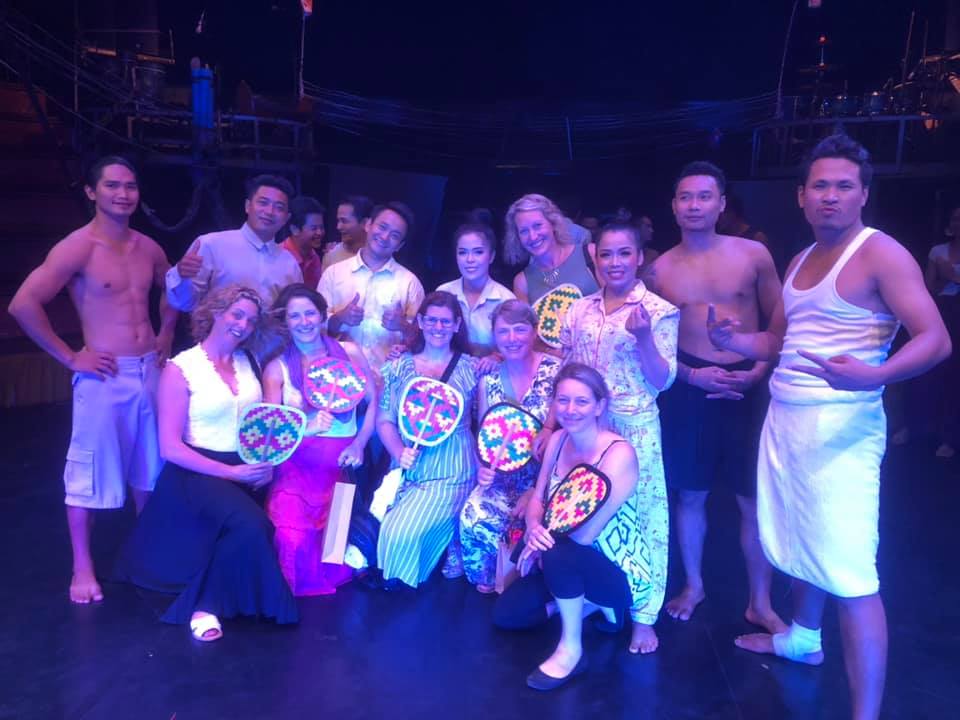
An early start to the day, we travelled to commence the start of our tour at Angkor Wat, which is believed to be the world’s largest religious building.
We started the tour here and were taken round to the back of the temple so that we saw the temple at its quietest rather than with the hustle and bustle of the crowds at the front. Here our guide explained the bas-reliefs which stretch for one kilometre and are intricate carvings that tell the tales of Hindu mythology and the glories of the Khmer empire.
This temple is set over different levels and the final steps to the upper terrace revealed some spectacular views and an opportunity to conquer a fear of the steps! Once I had practically crawled off the steps (much to the surprise of my fellow team members) it was all worth it as the views were peaceful and relaxing.
After conquering the steps to come down from the upper level, we then moved onto our next temple, Angkor Thom. We travelled along the terrace of Elephants to arrive at this temple and fed the monkeys with some mango along the way. Angkor Thom has 54 towers upon which the four faces of Avalokiteshvara (Buddha of Compassion), are set, so wherever you look you encounter a face of Buddha looking down on you. Again, a fear of steep steps was conquered.
After this temple, we travelled to the final temple called Ta Prohm, or as we called it ‘the Tomb Raider’s temple as it’s the one where they filmed the Lara Croft movie. This again was a tranquil place to walk around, if you can avoid the crowds (which luckily our guide could do). It was left abandoned to the elements so the tree roots have slowly grown around the stones. The Local government have since removed some trees to help preserve the temple and the temple is now being renovated by the Indian government.
We then returned to the hotel for some relaxation time, before we travelled in the evening to see the Phare Circus. This is a Cambodian circus with a mixture of music, dance and culture. The profits generated from the circus activities are used to fund free education, professional arts training & social support programs at Phare Ponleu Selpak, an NGO school. The show is a story and the one we saw was about the two different types of culture you witness when you are abroad; from the tourists and the locals. The show is a story and the one we saw was about the two different types of culture you witness when you are abroad, from the tourists and the locals. This was an extremely entertaining show and showed the local talent of the performers.
Day 4 – A visit to Free to shine
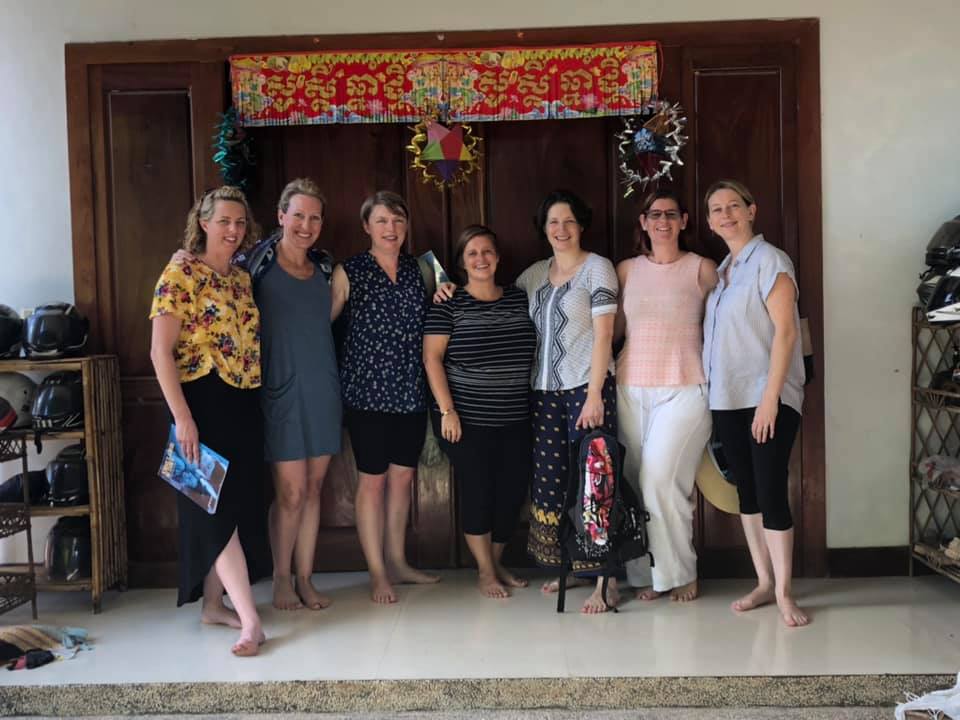
Day 4 for me was probably the highlight of our trip to Cambodia but it would not have been so powerful without the trip to the village, to give some background knowledge of rural Cambodia.
We visited Free to Shine at their offices in Siem Reap and were extremely lucky that our trip coincided with Nicky Mih’s time in Cambodia. Nicky is the founder of Free to Shine and spends around 3 months of every year in Cambodia whilst living in Australia the rest of the time.
Sierra, Free to Shine’s communications officer, explained the current situation in Cambodia, recent history and its impact on the work that Free to Shine now need to do to help girls stay safe in school rather than ending up in brothels.
The average Cambodian only earns $3 per day of which around $1 is spent on food and most of the rest on educating their children & servicing micro-finance loans (on which many are charged 25% interest!). There is free schooling but only for 50% of the time which is insufficient to pass the year, so parents must pay for the remaining 50% to other organisations.
We participated in a workshop called “A Mile in Serey’s Shoes” that Free to Shine had designed from real-life situations, along the lines of a “pick your own adventure” story book. We had to put ourselves in the shoes of a Cambodian mother and decide for a number of scenarios, which choice we would make. We were helped in the workshop by Kunthea (Education Officer) who Free to Shine helped through school & now works for the charity.
Here was one of the scenarios -Your son burns himself badly on the fire. Do you take him to the local healer (who mainly asks the spirits to heal but will only cost a couple of riels) or to the local medical centre, which will cost $1? We decided to take our son to the healer but then unfortunately he ended up with a bad infection in hospital in Siem Reap. Although the hospital care was provided, the mother still had to pay for transport to the hospital for 1.5 hour journey each day to feed her son (food is not provided at the hospital) and could not stay with her son as she would risk losing her job.
The workshop was really thought provoking but also very well done as not every outcome was negative, there were quite a few positive outcomes as in real life! I think it was particularly effective as we were all mums ourselves.
Our minibus then picked us up and took us to Marum for lunch, a social enterprise restaurant which helps under-privileged children to have a training in the restaurant trade. We wanted to support this venture further, so we purchased a brick which funded a month of training.
In the afternoon, Nicky joined us at our hotel for Yoga, swimming & dinner. The evening culminated with a competitive DOS card game into the early hours!
Day 5 – Floating Village
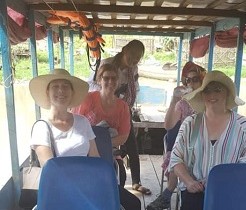
On day 5 of our humbling trip to Cambodia we were lucky enough to be given the opportunity to visit the floating village Kampong Khleang situated on Tonle Sap the largest fresh water lake in South East Asia.
On our way there, we stopped by the side of the road. for a local treat of sticky rice grilled in bamboo It was a bit like a very dry sticky rice pudding with red beans, even now I’m still undecided if I liked it……
As we drove through the village it was fascinating to see the people living in stilt houses up to 10m in the air and mainly constructed of wood and bamboo. When you looked closely at the stilts you could see water marks from previous years wet seasons, where the water would rise and flood the currently dry village. It made me realise how adaptable these villagers needed to be, our tour guide said that just before it flooded the locals had to take any vehicle on wheels to be stored in the closest town and all their travel would then be purely by boat. The farmers have had to adapt to living on the water so do not raise conventional livestock like chickens but instead rear crocodiles and of course rely heavily on fishing and catching shrimp to survive, often having to make a 3-hour journey out onto the main lake to catch the best fish available.
Just before we boarded the boat and despite it being a Sunday we were met by hundreds of school children in uniform. When we asked what they were doing we were told it was a community clean up where they had come together to clear all the rubbish from the area. It was amazing and inspiring to see the whole community working together, there was music and so much laughter.
What struck me was how happy and content the people were, despite having so little. It made me realise that as westerners we have become a little complacent and ungrateful for what we have. However, I was amazed at how resourceful they were when I saw houseboats floating on whatever could be used, old petrol canisters, bamboo etc with solar panels on the roofs.
I must admit I felt a little uncomfortable for intruding on their everyday lives, however I could also appreciate that the tours were providing a much-needed additional income for the community.
Final Day – Self-contemplation and silkworms
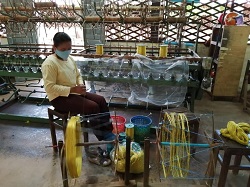
The final day of the trip allowed us a slightly later breakfast and sometime around the pool. It was a moment of peace where each of us found a place to lie, sit or swim. The air around us was serene and tranquil, even the building site behind the hotel seem to know it was time for reflection, as the machinery was silent and there were no shouts from the workers, as I let each of the days pass through my mind. In my head I heard the markets, I tasted the food and I thought long and hard about the social difficulties suffered by most families in rural Cambodia. However, this period of reflection also brought up more questions and I knew that I had only touched the tip of the iceberg of my desire to understand this beautiful country.
Little did I know how soon these niggling questions would multiply by our short stop at the silk factory on our way to the airport.
Mulberry fields and floating furniture!
We began our visit by looking at the mulberry fields. Many different mulberry bushes were grown on the property to determine which were best suited to the soil and climate. The thick bushes were trimmed every 3 to 4 weeks, the leaves were then shredded and transferred into the building.
When we walked into the building it was strange to see that all the furniture stood in pots of water. This practice prevented the ants and crawling insects from entering the house to protect the precious silkworms.
A quick lesson on silk production – did you know it takes 6,600 silkworms to make 1kg of silk?
The silkworm makes his cocoon by spewing out thread to encase itself and once the cocoon changes from white to gold they are transferred from the mulberry leaves onto woven mats.
10 day later the cocoons are boiled, this causes them to unravel and the workers can obtain the silk threads (allowing the moth to hatch naturally would cause the threads to break destroying the cocoon). The worm is then used for lunch! They allow 20% to survive for the next generation of larva.
As the cocoon unravels the workers hook the thread on one end on the wheel and slowly spin it. This requires constant close attention to ensure the silk is pulled in one long thread.
The raw silk is a golden colour and it fascinated me that they used natural resources to colour the silk as well as synthetic colours. The most interesting techniques was ‘Hol’ – this is where groups of thread are bound and tied before they are dip dyed. Repeated dying creates complex patterns.
The weaving takes place on a loom with a mechanical shuttle for longer lengths of plain silk fabric, whereas manual shuttles are used to weave patterned pieces with the different coloured silks put on chopsticks so the weaver can feed them into the loom.
How do you train in this ancient art?
Artisans Angkor was founded in 1992 to provide training and employment opportunities for Cambodian women in a Khmer Craftmanship that was almost wiped out during the Khmer Rouge times. The silk farm employs more than 400 women. They begin with an unpaid 6-month training programme and only receive a small percentage of the profits of any products sold in the shop. Once qualified they are then able to live at the centre and earn a full wage.
Our final thoughts leaving the silk farm
I do like the theory – reviving an ancient rural craft whilst giving these women a future as qualified silk weavers, but at what cost? The visit provoked as many questions for me as it did answers…
• Why did we not, as part of the tourist visit, see the accommodation provided for the workers?
• Why did we not see the workshop in full production mode?
• During the 6 months of no pay or help towards transport, how do these women manage? 6 months living on a hand to mouth basis seems a very harsh induction programme.
• Should the gift shop be such a glamourous environment; is there more investment placed there than in the comfort and well-being of the people who craft these luxury items?
• Would I now buy handmade silk items?
• Do we ever really know what is behind the items that as a consumer we buy?
See Asia Differently were so inspired with our efforts at fundraising for Free to Shine and our giving back philosophy that if any of our Pillow May clients would like to follow in our footsteps, they will donate 5% of your trip fee to Free to Shine!

